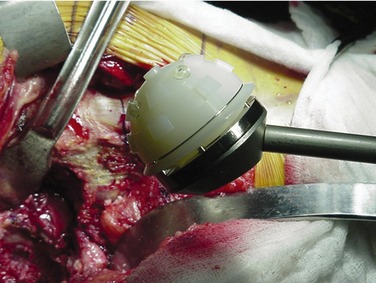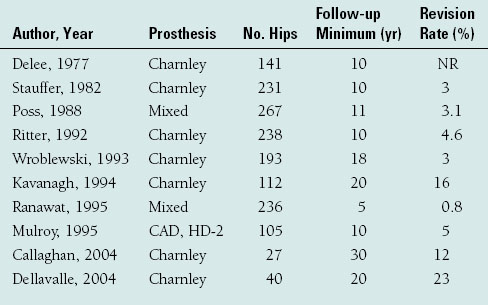CHAPTER 16 The Cemented All-Polyethylene Acetabular Component
The use of cemented all-polyethylene acetabular components has been dramatically reduced in the United States in the past decade as a result of the increasing trend toward noncemented fixation. Nonetheless, it remains the most common form of acetabular fixation worldwide. The reasons for this are numerous. A well-done cemented acetabular component is durable, reproducible, and inexpensive and has a predictable failure mechanism (Fig. 16-1).
INDICATIONS AND CONTRAINDICATIONS
For many surgeons, the cemented all-polyethylene acetabulum is indicated for all comers regardless of age, diagnosis, or deformity (Table 16-1). In our experience, the survivorship of a cemented all-polyethylene acetabular component at 10 to 20 years was 98% in patients with a life expectancy of less than 30 years with osteoarthritis and good bone stock. We also prefer to use cemented fixation in the irradiated pelvis owing to the diminished potential for biologic ingrowth.













